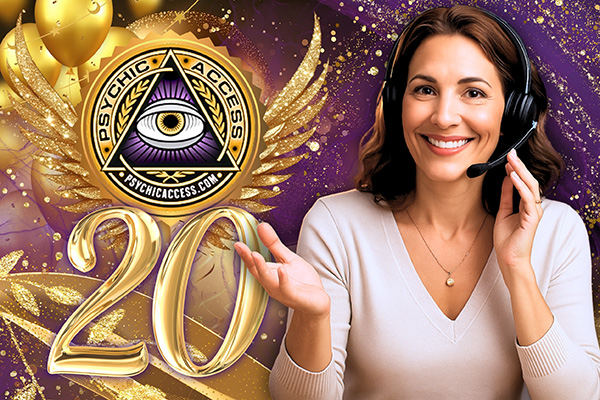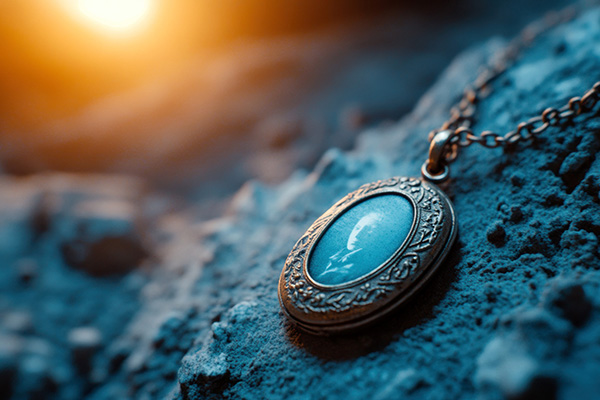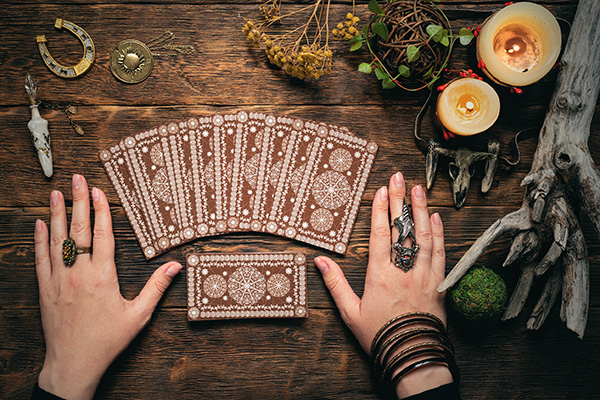20 Years of Exceptional Psychic Achievements: A Commemoration
 August 2025 signifies a remarkable milestone for us at PsychicAccess.com as we commemorate our 20th Anniversary this month!
August 2025 signifies a remarkable milestone for us at PsychicAccess.com as we commemorate our 20th Anniversary this month!
Indeed, it has been an extraordinary two decades since we initially introduced our website and conducted our inaugural reading in late August 2005, right after our official incorporation in February of that same year.
Twenty incredible years of assisting seekers globally, channeling spiritual insights, and providing transformative psychic readings and mediumship messages to a loyal and expanding international community. What a wondrous journey it has been!
In an industry that has seen numerous psychic platforms, phone services, applications, and other online services come and go over the past 20 years, Psychic Access, Inc. has proven its resilience.
Our longevity and ongoing success are not mere chance. They result from steadfast integrity, unparalleled quality, and a profound dedication to authenticity and service.
From the start, we aimed to create something distinct. Something superior. Today, we take pride in being a digital refuge for seekers and believers around the globe, providing a trustworthy, secure, and compassionate environment for guidance, healing, and transformation.
Psychic Access was never merely a fad or an ephemeral concept. It was established with care, purpose, and foresight. From our early days of coding and selecting our first psychics to the launch of our blog and the development of our platform, we have remained committed to our mission: To channel the world’s finest psychic insight, mediumship, and transformational guidance to clients globally in complete confidentiality and at reasonable prices.
At Psychic Access, we pledge to offer a secure, inviting, and reliable atmosphere where clients can connect with psychics who genuinely care. Our goal is to nurture meaningful relationships that extend beyond a single reading. Thank you for being part of our growing community of wisdom for all these years!
Psychic Access: 20 Years Of Excellence
Throughout the last 20 years, we have observed numerous psychic companies and platforms rise and fall. Many began with great excitement, only to disappear into the digital void. Yet, we remain here. Continuously answering your calls every day. Consistently providing trusted, transformative psychic insights with each reading.
Even more remarkable is that many of our clients from 2005 continue to be with us today! This serves as a testament to the strong relationships we’ve established. Over time, we have developed and adapted alongside them, assisting them in overcoming personal struggles and spiritual challenges, as well as global economic downturns, geopolitical shifts and conflicts, environmental crises, a worldwide health emergency, and technological advancements.
We value their enduring trust and loyalty and feel privileged to have stood by them through all these years. We treasure each of them.
What enabled us to thrive for 20 years while so many others diminished? The response is straightforward. We never compromise on quality, ethics, and truly caring for the individuals we serve.
Unmatched Psychic Screening: Fewer than 1% of applicants ever qualify for our platform. Each psychic is rigorously vetted, interviewed, and assessed for accuracy, professionalism, and integrity. They must also possess a demeanor and personality that genuinely resonates with our devoted and discerning clientele.
Transparency & Quality: We strive for psychic excellence and believe in complete transparency, which is why we gladly share unedited customer reviews: the positive, the outstanding, and even the not-so-great. This empowers our clients to make informed choices grounded in real experiences. Our aim is to establish and uphold a gold standard in both psychic services and customer contentment.
Strict Code Of Ethics: Every psychic in our network must adhere to our clearly stated code of ethics. These guidelines strictly prohibit unethical practices, including solicitation, spellwork, curse removals, or attempts to circumvent our platform. Psychics who breach these standards are immediately dismissed, without exceptions.
Client-Centered Care: We prioritize responsiveness, empathy, and dedication to our clients’ wellness. We make all efforts to resolve legitimate concerns promptly and ensure every interaction feels personal and respectful. Your experience matters to us. We may be modest, but we are powerful! We take pride in operating as a boutique, VIP-level psychic reading service where clients are never treated as just a number.
Global Accessibility & Confidentiality: Our services are accessible to clients across the globe, 24/7, from the comfort of their own homes. We maintain the highest standards of security and discretion, ensuring that your privacy and identity remain protected. No matter your location, your connection with us stays safe and confidential.
Free Daily & Weekly Horoscopes: Thousands of readers turn to our expert resident astrologer, Susyn, each day for insight and guidance. Our complimentary daily and weekly horoscopes offer a meaningful, spiritually grounded forecast tailored to your zodiac sign. It serves as one of the many ways we support your journey, day by day, week by week, and sign by sign.
Free Daily Blog Posts: Alongside our horoscopes, we also release a fresh blog post each day on PsychicBloggers.com. These articles, crafted by our talented psychic team, explore a wide range of topics including metaphysics, divination, spirituality, energy healing, and the paranormal. It’s our daily offering of wisdom and inspiration, designed to guide and elevate your spiritual path.
Psychic Bloggers: 15 Years Of Daily Inspiration
This year, we also mark the 15th anniversary of our dedicated blog site, PsychicBloggers.com, which debuted with the first post on June 6, 2010. Every single day since then, without exception, we have been publishing insightful content from our talented team of psychic advisors. Seven days a week, all year round.
PsychicBloggers.com is your daily source of psychic insight and spiritual encouragement. It is a vibrant place where curiosity meets creativity and courage. Here, you’ll encounter a blend of expert opinions, thought-provoking narratives, alternative perspectives, verified details, and practical advice, all crafted to inspire your journey and empower your pursuit of joy, success, and fulfillment.
We are devoted to disseminating our knowledge and experiences, keeping you informed about the latest in psychic phenomena, divination, metaphysics, energy practices, conscious living, spirituality, esoteric rituals, and everything supernatural and paranormal.
Whether you wish to broaden your understanding, acquire fresh insights, be motivated by enlightening concepts, or discover inventive solutions to life’s many challenges, we cater to everyone. It’s no surprise that we are currently rated as the number one psychic blog in the world according to search results and premier directory listings.
Our Gift For First-Time Callers
To honor this remarkable 20-year journey, we are inviting all new customers to experience the Psychic Access advantage through our free trial reading offer. That’s correct. Your very first reading with any available psychic of your choosing is entirely free. No credit card necessary. No conditions attached.
Why do we extend this offer? Because we genuinely believe in what we do. We know you will cherish your experience with us and will wish to return and build a lasting connection.
If you are not yet one of our esteemed clients, we invite you to register today at PsychicAccess.com. Join us in celebrating two decades of spiritual service. Experience the magic yourself. Your initial reading is on us.
Whether you are a long-term client, a returning seeker, or a newcomer to the realm of psychic readings, we warmly welcome you into our community. Thank you for 20 remarkable years of trust, connection, and transformation.
As we reflect with profound gratitude, we also gaze ahead with anticipation. The future is promising, and we remain committed to delivering the finest in psychic services for many more decades to come.
|
Receive daily insights of psychic wisdom and spiritual inspiration from our gifted psychic advisors at PsychicAccess.com. We share a new blog entry each day on our official blog site at PsychicBloggers.com. All of our articles are tailored specifically for your enlightenment and personal development by our talented professional psychics. We are dedicated to sharing our expertise and experience, aiming to keep you informed about the latest in psychic phenomena, divination, metaphysics, energy work, spiritual living, the paranormal, and esoteric practices. If you are new to the Psychic Access wisdom community, your first reading with us is FREE with any available psychic of your choice. Yes, we are that confident you will enjoy us! Join us today at PsychicAccess.com. |
For the last two decades, Psychic Excellence has been a guiding light and source of support for those seeking answers and clarity in their lives. As they commemorate their 20th anniversary, it’s a moment to reflect on the influence they have had on innumerable individuals and the legacy they have established.
Established in 2001 by acclaimed psychic medium, Sarah Johnson, Psychic Excellence has rapidly evolved from a small practice to a worldwide sensation. With a team of gifted psychics, mediums, and tarot readers, they have aided clients in navigating life’s hurdles, achieving peace and healing, and reconnecting with their inner selves.
Throughout the years, Psychic Excellence has built a reputation for their accuracy, compassion, and ethical standards. They have offered insights on love, relationships, careers, finances, and much more, empowering clients to make informed choices and discover their authentic path.
Alongside their individual readings, Psychic Excellence has conducted workshops, classes, and events to assist individuals in developing their own psychic abilities and spiritual growth. They have fostered a community of like-minded people who encourage and uplift one another on their spiritual journeys.
As Psychic Excellence celebrates their 20th milestone, they express gratitude for the trust and support of their clients and the chance to positively influence so many lives. They are excited to continue their mission of delivering guidance, healing, and empowerment for many years ahead.
In summary, Psychic Excellence’s 20 years of outstanding service exemplifies their dedication, passion, and commitment to aiding others. They have undoubtedly made a significant impact on countless individuals, setting a standard of excellence within the psychic industry. Here’s to another 20 years of psychic greatness and ongoing success in assisting others in finding clarity, peace, and fulfillment in their lives. Continue reading















